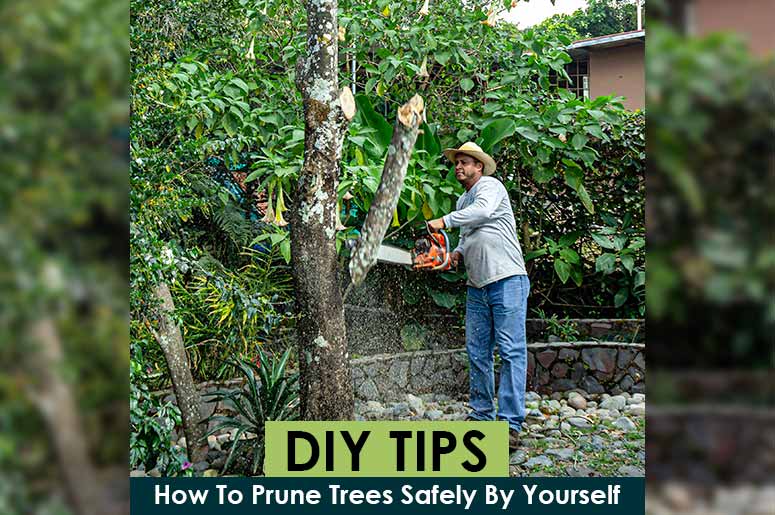How To Prune Trees Safely By Yourself
Tree pruning is an essential part of caring and maintaining your trees at home. Not only does it encourage strong growth, but also increases flower and fruit production. Knowing how to prune trees yourself is critical, especially if you don’t want to put yourself in harm’s way and prevent property damage. So if you want to reap the many advantages of pruning your trees, here’s what you need to know.
1. Assess how complex or simple your pruning needs are.
It’s simple enough to trim tree branches on short trees, but if you’re pruning near a power line, it may not be such a good idea to trim trees yourself. Moreover, if you see plenty of dead or hanging branches and the tree is close to a building, you know it’s not a simple task anymore.
Complicated pruning jobs should be left to professional arborists and tree loppers. Moreover, you’ll need to choose the best time to trim your tree. For instance, usually suggest avoiding pruning during inclement weather.
2. Remove damaged branches first.
Any branches that are damaged, whether it’s by a storm, lightning strike, or other types of events, should be removed. They still consume valuable nutrients that are better distributed to other branches, and they can be a safety hazard for people who walk under them. This is especially true for damaged branches that are already hanging and waiting to fall.
If you’re not sure when to prune damaged branches, you can consult with a professional tree lopper. In most cases, they’ll suggest trimming tree branches that are damaged automatically.
3. Shape the tree as desired.
A few cuts here and there can dramatically improve the overall appearance of your tree. This part should be simple enough, just make sure to check how your tree looks from afar so you can better spot odd angles and trim away branches that are sticking out.
More Tips to Remember
Cutting Large Branches:
For bigger branches, the typical approach is to make a shallow cut on the underside first then continue from the upper side to prevent the branch from peeling down the side of the trunk when it falls. It’s best to make your cut just outside the branch collar, which looks like a swollen area that joins the trunk and branch together.
Cutting Forked Trunks:
A forked trunk can have a hollow cavity where insects and rot can weaken the tree, which is why they’re best removed before they damage your tree further. While a tree is still young, get rid of the forked trunk. This should be a simple enough task, even if you don’t know how to prune trees. Just cut as close to the ground level as you can while taking care not to do damage to the bark that’s left on the trunk.
Cutting Clustered Branches:
When several small and weak branches are clustered together, they can drastically weaken the tree. To let the other stronger branches grow better, remove smaller ones so the rest can receive more sunlight, and have better air circulation.
Need more professional help on how to prune trees?
Knowing how to trim trees correctly is important if you want your property to look more appealing. Some pruning needs, however, may require more careful planning and the right tools and experience. If you’re in doubt about anything at all with a pruning job, or if you don’t know how to prune trees yourself, don’t hesitate to get help from tree trimming services in Sydney.

